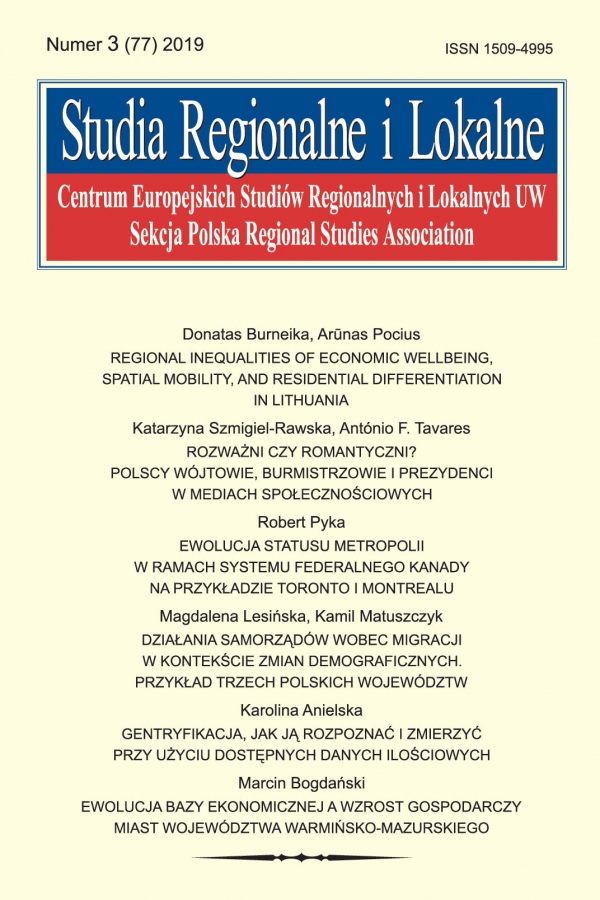Published in
3(77)/2019

- Donatas Burneika, Arūnas PociusRegional inequalities of economic wellbeing, spatial mobility, and residential differentiation in Lithuania[more]
- Katarzyna Szmigiel-Rawska, António F. TavaresSense or sensibility? Polish mayors in social media[more]
- Robert PykaThe evolution of the metropolis status within the Canadian federal system on the example of Toronto and Montreal[more]
- Magdalena Lesińska, Kamil MatuszczykThe activity of regional authorities facing migration processes in the context of demographic changes: The case of three Polish voivodships[more]
- Karolina AnielskaGentrification: How to recognize and measure it using available quantitative data[more]
- Marcin BogdańskiEvolution of the economic base and economic growth of the towns and cities in the Warmińsko-Mazurskie voivodship[more]
- Jakub MirekBlanka Brzozowska, Miejskie tłumy. Miasto i wspólnotowość w dobie sieciowej współpracy (recenzja)[more]


